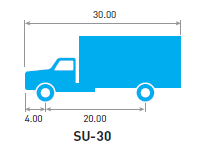3 Design Standards
Design standards present a consistent approach to designing each element of the right-of-way to best serve the traveling public, support land use patterns, and encourage economic growth in the City and the region. The design standards have been developed with safety as the paramount goal for all travelers, in line with the city’s Vision Zero goal to end traffic deaths and serious injuries by 2030. All new public and private development projects in the right-of-way will be required to use these standards as the basis of design. Knowing that all projects have site specific opportunities and constraints, a deviation process has been developed to achieve flexibility when necessary. When reviewing and approving projects in Seattle’s right-of-way, the City of Seattle makes every attempt to balance the vision for a project with adopted policy, regulation, user acceptance ,and public safety.
The design standards in Streets Illustrated are to be used in conjunction with other applicable City, State, and National standards for right-of-way design. More information on these standards can be found in City of Seattle Standard Plans and Specifications and Washington State Minimum Design Standards.
This section also includes design guidance, which represents design strategies that may not be achievable in every instance, but should be evaluated for feasibility during the design phase.
Design Vehicle
SDOT’s standard design vehicle is SU-30 with a 42-foot turning radius. Designers should use this vehicle when using Auto Turn for intersection analysis. On Industrial Access streets, Urban Center Connector streets, major and minor truck streets, or other locations where SDOT would anticipate a larger vehicle using a site, a radius evaluation based on a larger vehicle would be required.

